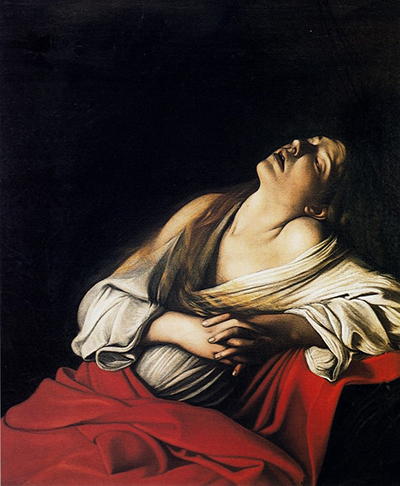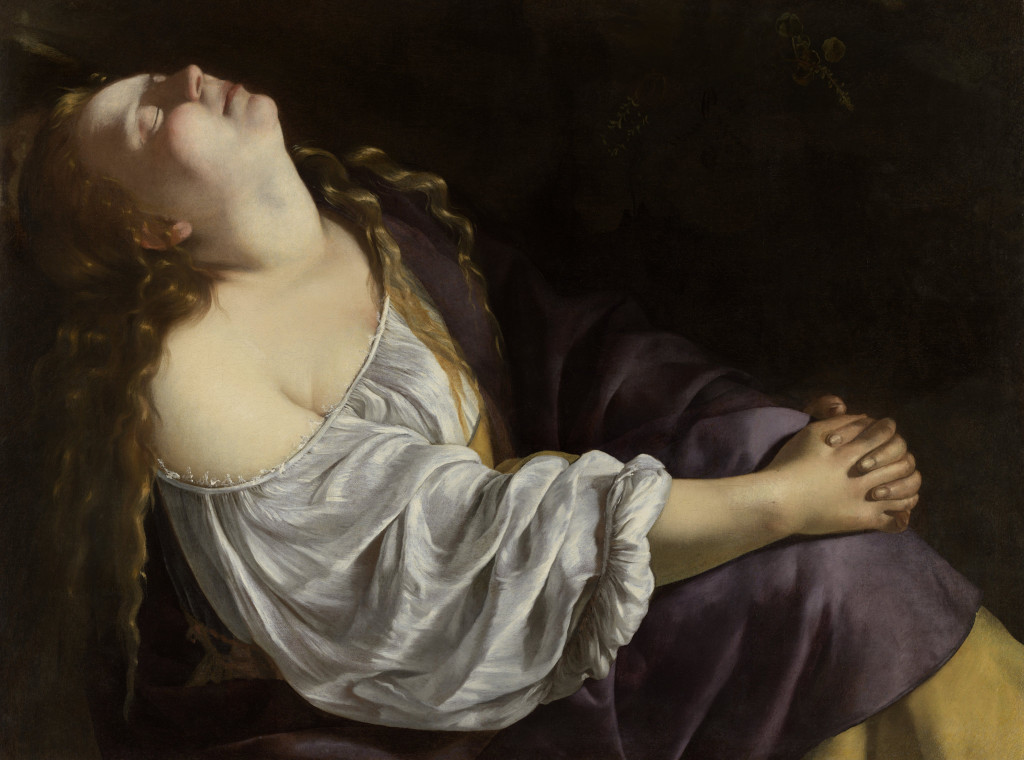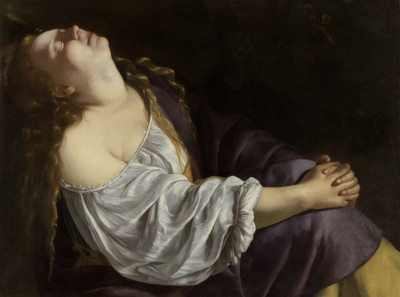This powerful portrait, Mary Magdalene in Ecstasy, is believed to have been completed by Artemisia Gentileschi between the years 1620-1625. It resides today within a private collection.
Mary Magdalene was a common source of inspiration for artists of the Renaissance and Baroque eras, with Gentileschi alone re-visiting it several times. This composition was highly personal, with the figure enlarged and brought towards the viewer, with all other details excluded.
Artemisia bore many hallmarks of the Caravaggio style, though appended her own ideas on top. We see here a deeply contrasting use of light, which saturates the model, but leaves the background entirely darkened. This approach produces powerful impacts, particularly within portraiture.
Artemisia would often claim that Caravaggio was her biggest influence, and from whom she would learn the craft of painting (by examining his work). In reality, it was her father, Orazio, who encouraged and taught her the artistic skills which would laid the foundation to all these she later achieved. That said, she very much developed her own unique approach on top of these teachings, and forged a unique path within the Italian art scene.
Composition
The model is angled from the top left down to the bottom right in a diagonal direction. Most light is applied to her facial features which also helps to lead our eyes towards the most significant part of the composition. The right shoulder is revealed, adding to the dramatic atmosphere of this artwork.
The artist positions the model unusually close to the viewer, enlarging her features and allowing us to connect with her, even though she looks directly upwards. The impressive technical skills of the artist, including the drapery, help us to feel a part of the scene ourselves.
Description
Mary has her hands tightly clasped around her knees whilst leaning backwards, with her head tilted upwards. Her eyes are closed as she experiences the ecstasy which the artist works hard to transmit to the viewer. Her hair hangs down, helping to accentuate the femininity of the subject, which Artemisia was better able to portray than the male colleagues with whom she worked closely.
The painting itself is just over a metre in width, and around 80cm in height. It was completed entirely in oils, on canvas, though this was entirely normal for the period and does not help in establishing an attribution. Artemisia was most famous for her female portraits, including sometimes of herself, but she also covered male subjects from time to time.
Caravaggio's Mary Magdalene in Ecstasy
An interesting comparison can certainly be drawn with Caravaggio's The Magdalen in Ecstasy. Both artworks feature a reclining Mary, and with background features darkened to the point of being invisible. It is likely that Caravaggio's version, from around two decades earlier, would have influenced Artemisia's plan, but she would always incorporate her own innovations too.
She chose the same diagonal approach, but facing the opposite direction. Caravaggio used a saturation of red tones, and a slightly less glamorous top half of clothing. Again, both feature the hands clenched together, and the head back, looking upwards with Mary's eyes shut.

Large Image of Artemisia's Mary Magdalene in Ecstasy
The larger image below allows us to appreciate some of the detail added by the artist, such as this facial expression of Mary Magdalene, as well as the delightful touches of drapery which can be found in her clothing. This piece has only recently been attributed to the artist, and is a welcome addition to her oeuvre. See also Gentileschi's Mary Magdalene as Melancholy.
 Mary Magdalene in Ecstasy
Mary Magdalene in Ecstasy




